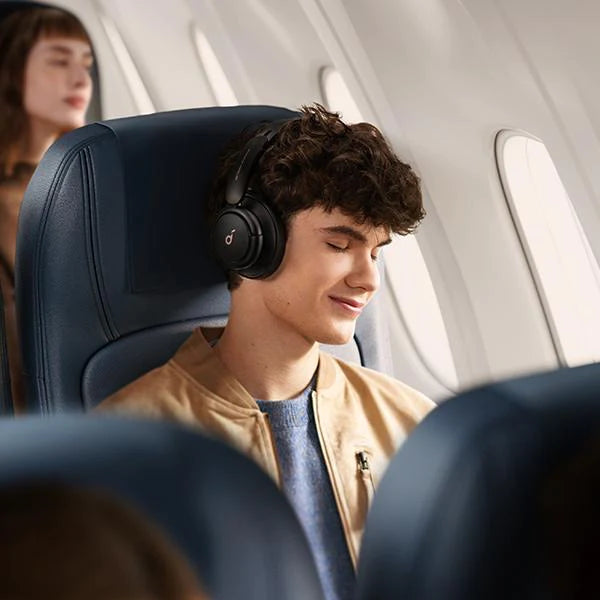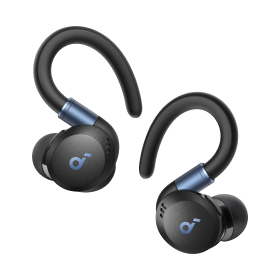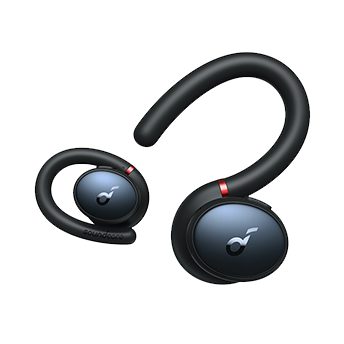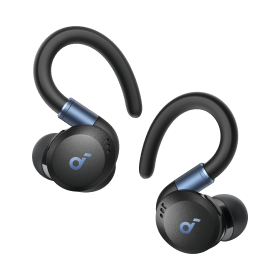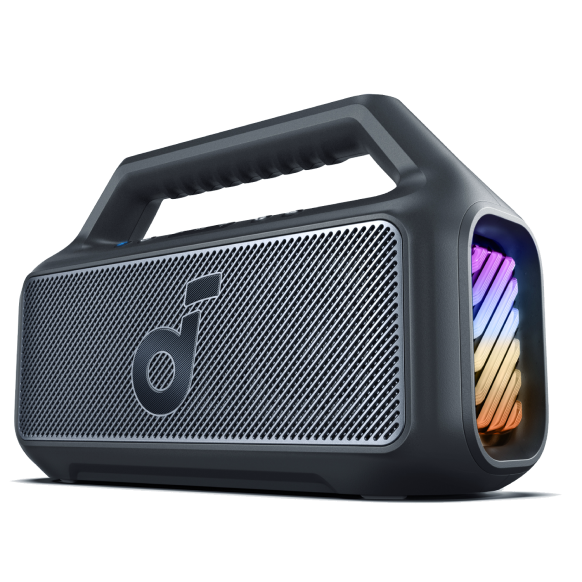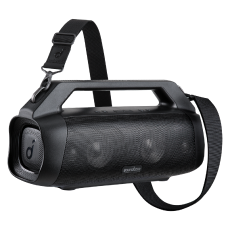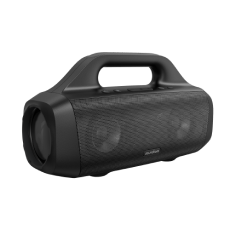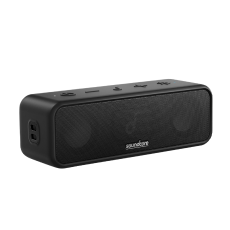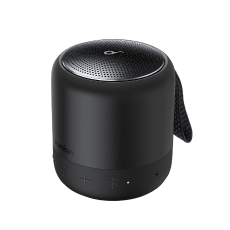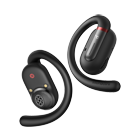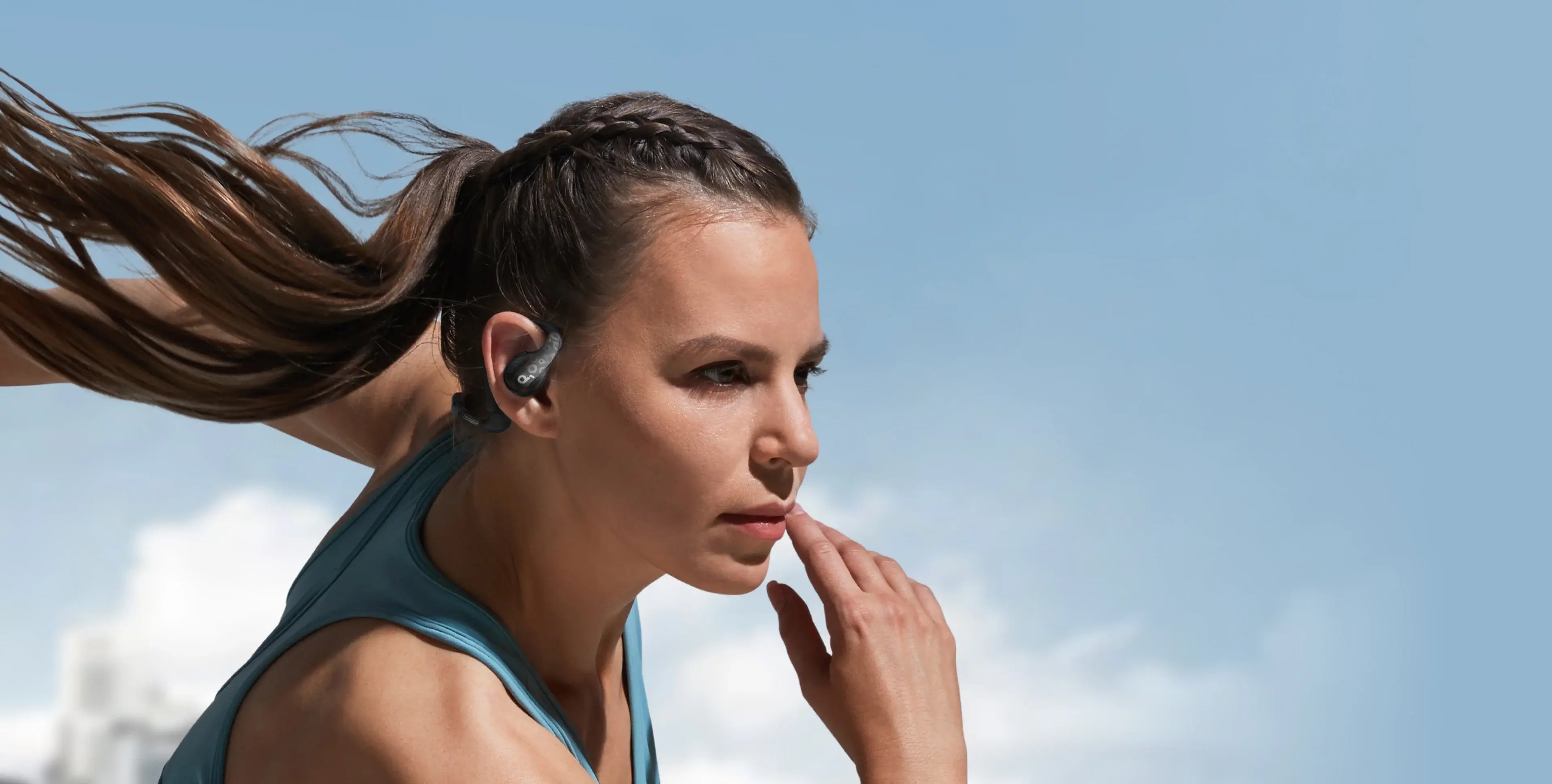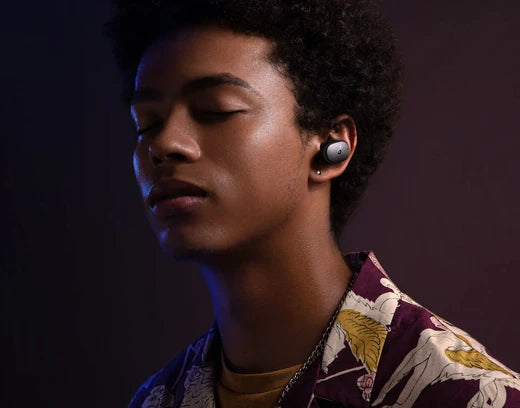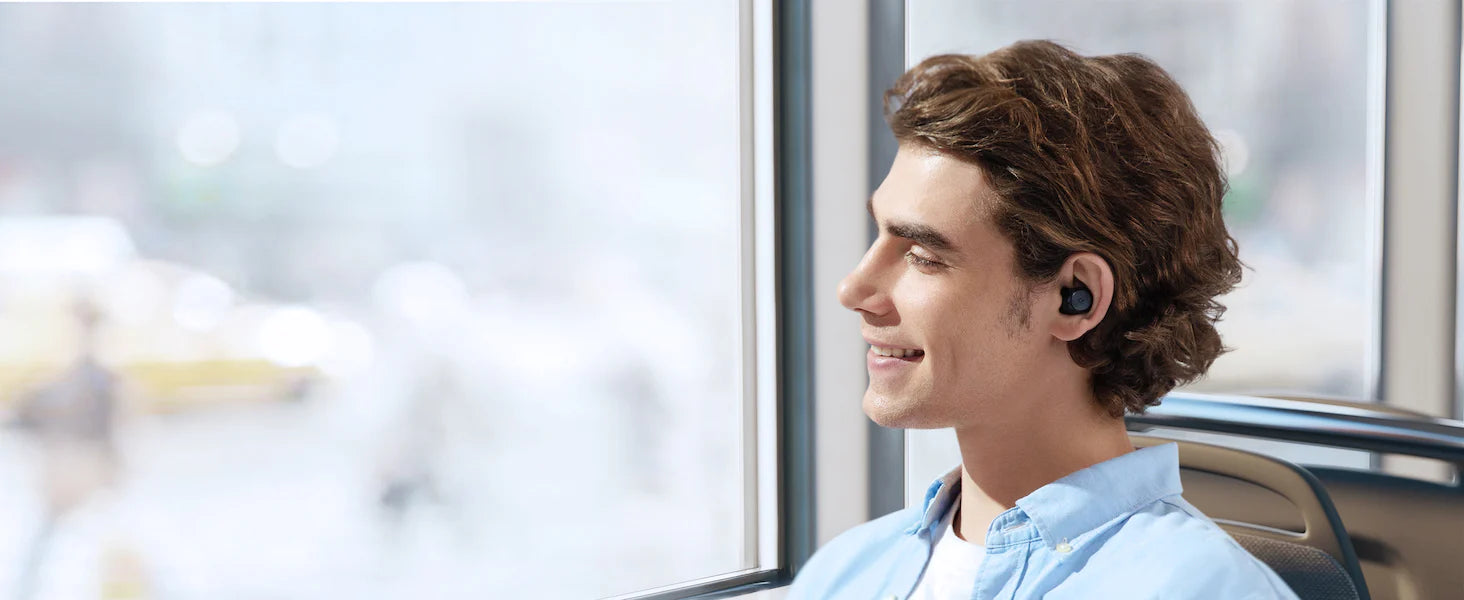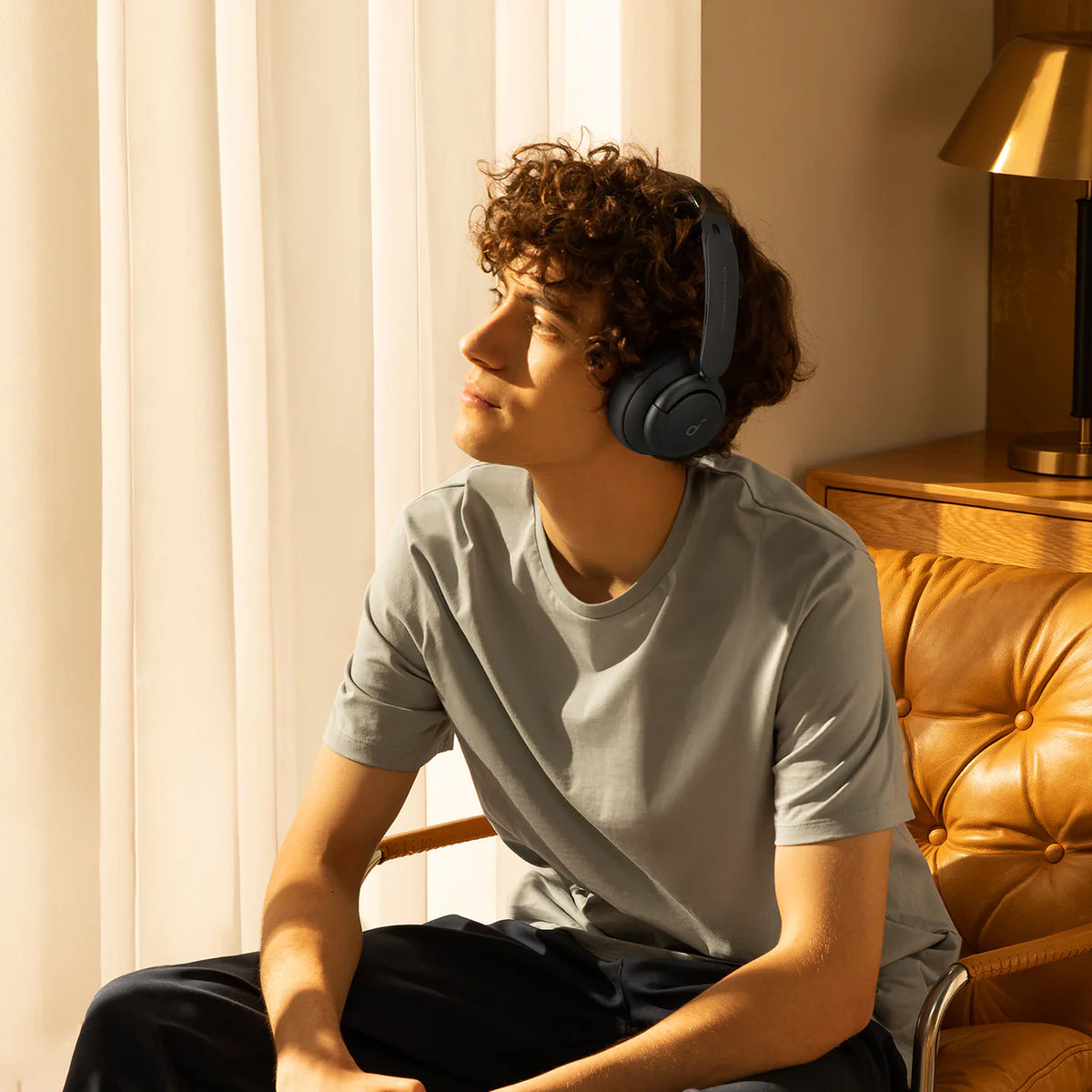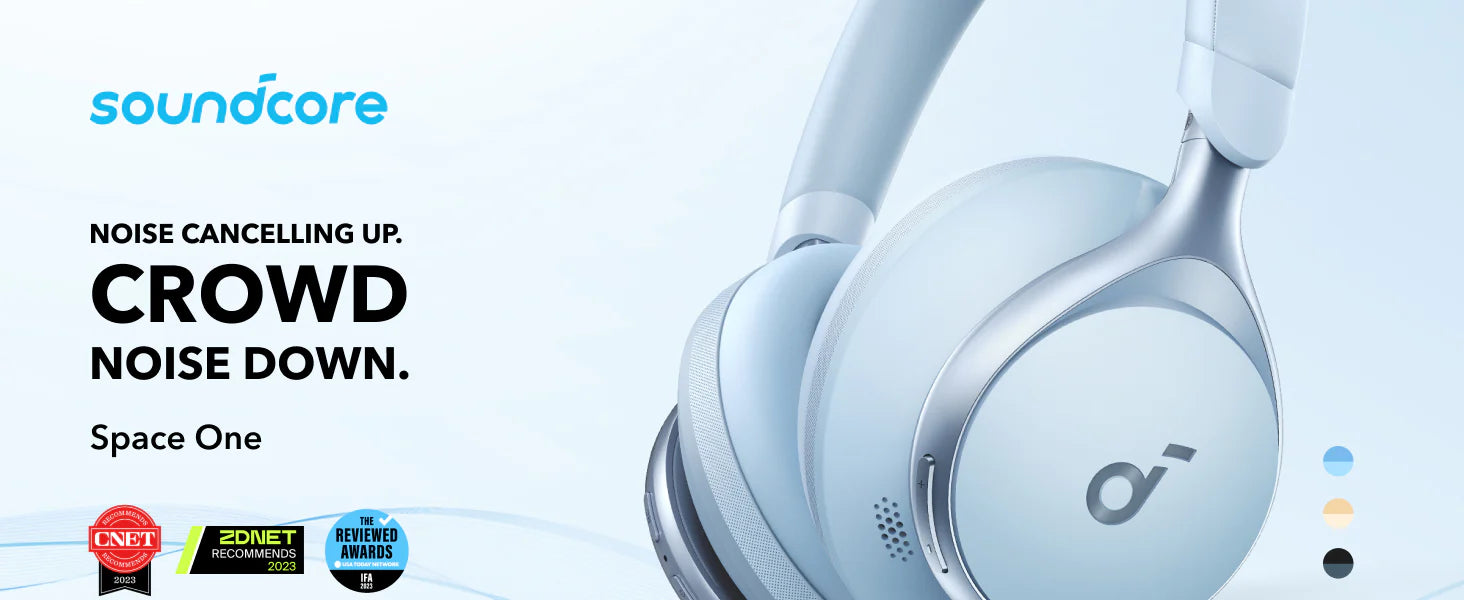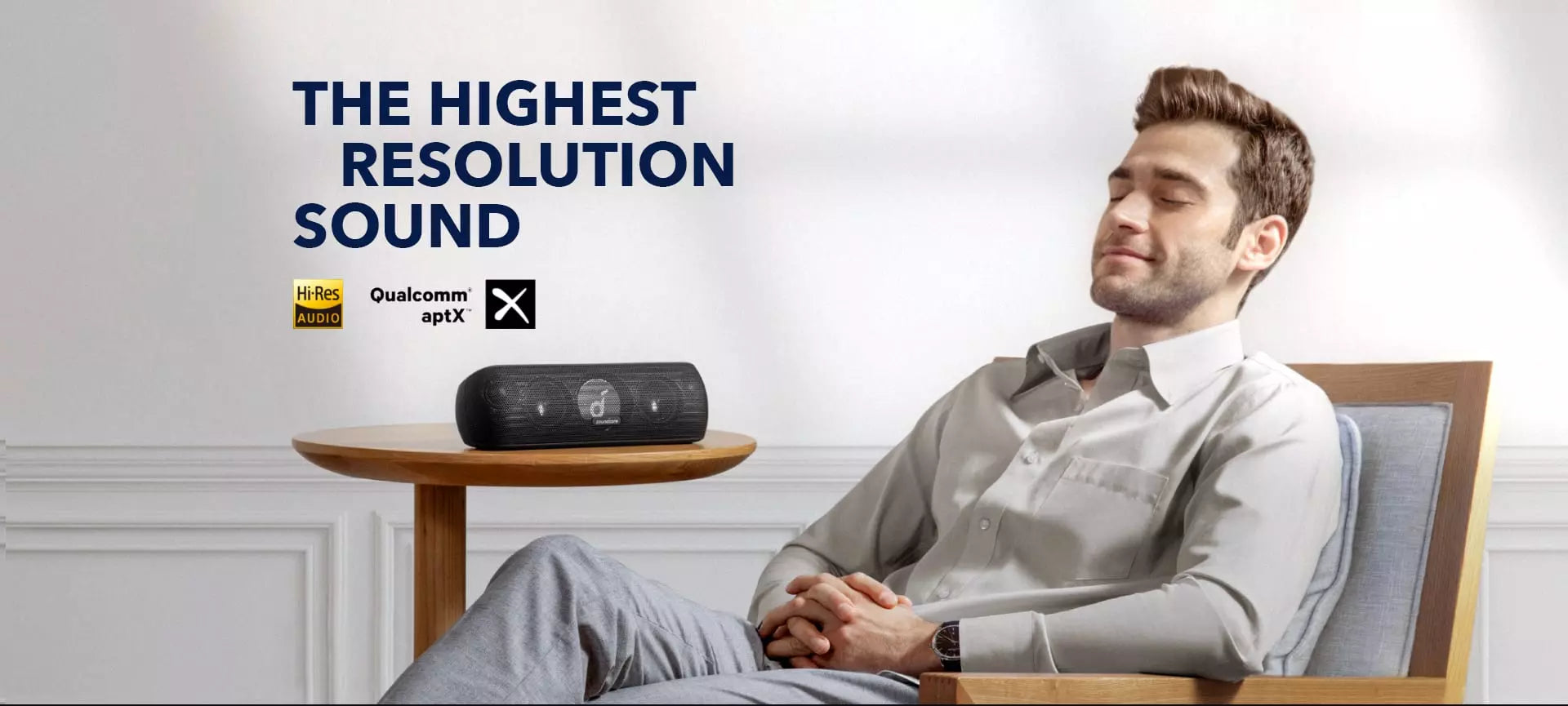Speaker Blog · 10/07/2024
Best Bluetooth Speakers in 2024: Expert Recommendation
In the fast-evolving world of audio technology, Bluetooth speakers have become indispensable companions, delivering high-quality sound in a portable package. As we navigate 2024, the market is brimming with innovative models, each promising superior performance. But which speaker is better and how to choose the perfect one? This guide will highlight the top 8 Bluetooth speakers of the year and provide you with expert tips to help you effortlessly choose the best Bluetooth speaker. Dive in now!
8 Best Bluetooth Speakers
Here are 8 high-quality Bluetooth speakers of the year, based on expert analysis and user feedback. Let's learn about their specifications and features in detail.
soundcore Motion X600
Meet the soundcore Motion X600, the world's best portable Bluetooth speaker. This little gem packs a punch with a high-fidelity sound that makes you feel like you're at a live concert. Whether you're hosting a lively party or unwinding solo, the Motion X600's 50W output envelops any space in rich, vibrant sound. Plus, its 12-hour battery life ensures your music keeps playing long after the party winds down.
But the soundcore Motion X600 doesn’t stop there. Its 40 kHz wide frequency range lets you hear the hidden nuances in every song, making sure that every detail, from the deepest bass to the crispest highs, comes through crystal clear. Lastly, being portable, lightweight, and IPX7-rated, you can take the music anywhere without giving a thought to the elements. Grab the Motion X600 and embrace a new era of musical enjoyment today!
JBL Charge 5
JBL Charge 5 exemplifies the ideal blend of compact size, performance, and durability, earning its spot as the best small Bluetooth speaker of 2024. With dimensions of 8.7 x 3.76 x 3.67 inches and a weight of just 0.96 kilograms, the Charge 5 is easy to carry without compromising on sound quality. It features a racetrack-shaped driver, a separate tweeter, and dual passive radiators, enhancing both clarity and bass performance.
What's more, the Charge 5 comes equipped with a built-in USB charging port, making it a handy device for juicing up mobile gadgets. With a 20-hour battery life and the PartyBoost feature for connecting multiple JBL speakers, the Charge 5 is a versatile choice for any occasion. If you are an outdoor adventurer for a long trip, this speaker might be the best for you.
soundcore Boom 2
For those seeking the best sound quality Bluetooth speaker in a budget-friendly package, the soundcore Boom 2 is a standout choice. Originally priced at $129.99, the Boom 2 is now available for an impressive $89.99 during a summer sale that offers $40 off, offering unbeatable value for its price range.
Its advantages are more than just price though. This speaker, powered by a racetrack subwoofer and dual tweeters, boasts an 80W maximum output characterized by booming bass and clear highs. The BassUp™ 2.0 technology allows users to tweak the bass EQ and fine-tune the output to their preferences.
Furthermore, this speaker offers 24-hour playtime on a single charge, ensuring that the music flows all day long. In addition, the built-in power bank is a handy feature for keeping your phone charged on the go. In short, if you opt for this best Bluetooth speaker under $100, you will be free to unlock its entire range of benefits without costing a fortune.
soundcore Boom 2 Plus
For those who crave powerful bass in an outdoor setting, the soundcore Boom 2 Plus is the ultimate choice. Compared to the Boom 2, the Boom 2 Plus elevates the audio experience with 140W max booming bass, courtesy of its dual woofers and BassUp™️ 2.0 technology. This results in 160% more output than the 1st-generation models, ensuring every beat is felt with intensity. Besides, its 2+2 stereo clarity enabled by dual 20W tweeters and dual 50W woofers creates a balanced, immersive audio experience.
As the best waterproof Bluetooth speaker, the Boom 2 Plus boasts IPX7 waterproof protection and a floatable design, making it perfect for any outdoor condition. Although it just offers 20-hour playtime (4 hours less than the Boom 2), its quick charging capabilities make up for this shortcoming, ensuring minimal downtime. By ordering the Boom 2 Plus, you are choosing the best bass Bluetooth speaker that has the power to redefine what music means to you.
Tribit Stormbox Flow
If you're seeking a superior indoor audio experience, explore the best Bluetooth speaker for home - the Tribit Stormbox Flow. Weighing in at 660g, its solid build conveys a sense of durability and luxury—ideal for enhancing any home environment.
Why settle for mediocre sound when you can have pulsating audio with clear vocals and booming bass? Thanks to XBass tuning, you get an extra 9dB boost with just a button press. Trust me, you’ll feel those beats. Even if you want to get a marathon music session planned, it’ll be ok. With 30 hours of battery life (24 hours with XBass on), your music won’t miss a beat.
Want to take it up a notch? Pair two StormBox Flows for an immersive stereo experience or activate party mode to really get things rocking. Ready to transform your home audio experience? Grab it today and let the music take over!
Ultimate Ears Epicboom
Despite the somewhat prohibitive cost of $329.99, the Ultimate Ears Epicboom excels as the best outdoor Bluetooth speaker. Featuring an efficient woofer and two high-frequency transducers, the Ultimate Ears Epicboom is perfect for 360-degree musical immersion. You can also tweak the sound profile to your liking via the BOOM app.
Another notable strength of this speaker is its robust build. Even when you travel in rugged mountains or other rough terrains, you can feel free to carry it as it is built to survive drops up to 1 meter. Its 55-meter wireless range is remarkable too, providing freedom to roam without losing connection.
Lastly, with a minimum of 59% post-consumer recycled content in its plastic components, the Epicboom is a testament to Ultimate Ears' commitment to sustainability.
soundcore Glow
If your goal is to throw unforgettable parties, don’t miss the soundcore Glow. It ranks among the best Bluetooth party speakers for creating a vibrant ambiance. This powerhouse packs 30W 360-degree sound, filling every corner of the room with impactful audio. But the real magic? The synchronized radiant light show pulses with the beat, creating an atmosphere that'll make your friends never want to leave.
Worried about the music cutting out? With an 18-hour max playtime, your tunes keep going strong all night. And if you’re taking the party outside, no worries - its IP67 rating means it can withstand moderate amounts of water and dust. Whether you’re at the beach, pool, or even floating on water, your music stays uninterrupted.
Want to crank up the party vibe? Just link up to 100+ soundcore Glow or other PartyCast-compatible speakers for an amplified experience. Buy this speaker today and let the good times roll!
Sony SRS-XB100
For those on a budget, the Sony SRS-XB100 offers impressive features at a highly affordable price of $58.88, making it the best budget Bluetooth speaker of 2024. Thanks to its Sound Diffusion Processor with EXTRA BASS technology, it delivers powerful surround sound with deep, punchy bass. Although compactly built, this speaker produces clear vocals and robust audio, making it an excellent choice for budget-conscious consumers who don't want to compromise on sound quality.
On the other hand, with up to 16 hours of battery life and Bluetooth compatibility, the SRS-XB100 is perfect for on-the-go listening. Additionally, it offers high-quality hands-free calling and the ability to create wide stereo sound by connecting two units. If you are looking for a budget-friendly speaker for outdoor uses, this speaker is the perfect choice due to its compact, lightweight build. So wait what? Pack it home now!
Factors to Consider When Buying the Best Bluetooth Speakers
When shopping for the best Bluetooth speakers, it's important to consider several key factors to ensure you get the best value and performance. Here are some crucial aspects to keep in mind.
Sound Quality
First things first—how good does it sound? When picking a Bluetooth speaker, the sound quality, especially the bass speaker, is key. You want clear highs, deep lows, and a balanced midrange, so your music or podcasts sound amazing wherever you are. Whether you're into rock, hip-hop, or podcasts, a speaker that delivers great sound makes all the difference in your listening experience.
Portability
Think about where you'll use your speaker. If you're on the move a lot, you'll want something light and easy to carry and may look for compact speakers that fit in your bag or have a handle for convenience. Otherwise, you can choose a large speaker for indoor use. Larger speakers generally deliver more robust sound with better bass, but they may be heavier and less convenient to carry around.
Budget
Your budget determines the range of options available to you. Understanding what you're willing to spend helps narrow down choices, whether you're looking for an affordable option under $60 like those from Sony, or willing to invest $100 for soundcore or more for premium sound and features.
Durability
For outdoor use, durability is crucial. Waterproof and dustproof speakers like soundcore Boom series offer peace of mind when using them at the beach, by the pool, or on hiking trips. A durable speaker ensures it can withstand environmental challenges without compromising on performance or longevity.
Speakerphone Capabilities
Some Bluetooth speakers include built-in microphones, making them versatile for hands-free calls. This feature is handy for conference calls or when you need to use your speaker as a speakerphone on the go. Considering speakerphone capabilities ensures your speaker meets both your audio and communication needs seamlessly.
FAQ
Do Bluetooth speakers have good sound quality?
Yes, Bluetooth speakers can have excellent sound quality, offering clear highs, deep bass, and balanced audio. Technologies like high-quality codecs, advanced drivers, and DSP have significantly improved their audio performance, making them a popular choice for portable and home use alike.
What is the loudest Bluetooth speaker?
While opinions vary on which is the loudest, the soundcore Boom 2 Plus is probably a close candidate. This speaker can reach impressive volumes with its 140W max output. It features dual woofers and BassUp™ 2.0 technology for deep bass and clear sound, making it perfect for large gatherings and outdoor events.
What makes a good Bluetooth bass speaker?
A good Bluetooth bass speaker delivers deep, powerful bass without compromising on overall sound quality. It typically features advanced bass-enhancing technologies like dedicated subwoofers, BassUp™ technology, and well-tuned drivers to produce rich, immersive audio experiences.
Conclusion
As technology advances, Bluetooth speakers continue to improve, offering better sound quality, enhanced features, and increased durability. Whether you're seeking a high-fidelity portable speaker, a budget-friendly option, or a robust outdoor model, the year 2024 is witnessing an increasingly diverse range of excellent choices to meet your needs. By considering the factors outlined above and exploring the top models we've highlighted, you can find the best Bluetooth speaker to elevate your listening experience.


